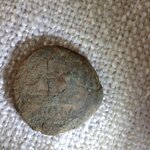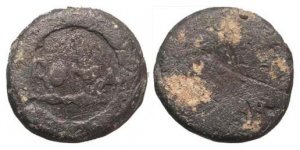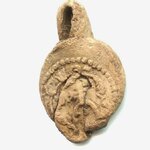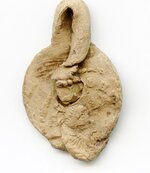Navigation
Install the app
How to install the app on iOS
Follow along with the video below to see how to install our site as a web app on your home screen.
Note: This feature may not be available in some browsers.
More options
You are using an out of date browser. It may not display this or other websites correctly.
You should upgrade or use an alternative browser.
You should upgrade or use an alternative browser.
Lead Roman stamp, possible coin.
- Thread starter vince76
- Start date
osage express
Sr. Member
- Oct 22, 2012
- 478
- 500
- Detector(s) used
- fisher 1236-x2 --Whites TM808---Whites Bullseye 2
- Primary Interest:
- All Treasure Hunting
Roman Engineers: Did The Romans Actually Make Their Coins From Lead? I think this may help you with your lead what is it.They are called a Tesserae or game token.The link will tell you more than i can
Upvote
0
Silver Searcher
Gold Member
One of the popular beliefs about Roman coins is that many of them were made of lead. While the Romans often did cheat on the amount of silver in their "silver" coins, they did not strike coins intended for circulation as money out of lead. Contrary to popular belief, the Romans and the Greeks before them could very precisely control the amount of copper, silver, and gold in the alloys they used. They knew that lead was way too soft to be used in making a coin that had to stand up to the wear and tear of circulation. The facilities and machinery for the coining of money were expensive to set up and maintain, and if they had struck coins of lead instead of brass or copper, they would have had to do the same work three or four times over. Lead coins would wear so much in circulation that they would soon be useless. During the Fourth and Fifth Centuries A.D., the bronze alloys used for the small bronze coins often contained a large proportion of lead which sometimes reached forty percentThe Romans did, however, strike some strange coin - like objects from lead. These were called tesserae, a word with a meaning similar to "tile" or "chip". Tesserae were used for various different purposes, including tokens for admission to the games in the arena, gaming and betting counters, and as bawdy house tokens. Today, a small worn lead tessera may be much more valuable than a coin from the same era because the tesserae aren't found as often as coins and collectors find them fascinating. It is not unusual for them to bring a price at auction of 1000 to 1500 dollars.
SS
SS
Upvote
0
CRUSADER
Gold Member
One of the popular beliefs about Roman coins is that many of them were made of lead. While the Romans often did cheat on the amount of silver in their "silver" coins, they did not strike coins intended for circulation as money out of lead. Contrary to popular belief, the Romans and the Greeks before them could very precisely control the amount of copper, silver, and gold in the alloys they used. They knew that lead was way too soft to be used in making a coin that had to stand up to the wear and tear of circulation. The facilities and machinery for the coining of money were expensive to set up and maintain, and if they had struck coins of lead instead of brass or copper, they would have had to do the same work three or four times over. Lead coins would wear so much in circulation that they would soon be useless. During the Fourth and Fifth Centuries A.D., the bronze alloys used for the small bronze coins often contained a large proportion of lead which sometimes reached forty percentThe Romans did, however, strike some strange coin - like objects from lead. These were called tesserae, a word with a meaning similar to "tile" or "chip". Tesserae were used for various different purposes, including tokens for admission to the games in the arena, gaming and betting counters, and as bawdy house tokens. Today, a small worn lead tessera may be much more valuable than a coin from the same era because the tesserae aren't found as often as coins and collectors find them fascinating. It is not unusual for them to bring a price at auction of 1000 to 1500 dollars.
SS
Yeap, like that famous brothel lead token.
Upvote
0
CRUSADER
Gold Member
I found this one months before but i never thought it could be old. I thought some little boy playing with lead stamps.
View attachment 1272982View attachment 1272983
That's a circa 17th C cloth seal.
Upvote
0
Top Member Reactions
-
 3420
3420 -
 2007
2007 -
 1948
1948 -
 1162
1162 -
 1099
1099 -
 904
904 -
 805
805 -
 800
800 -
 793
793 -
 791
791 -
 745
745 -
 534
534 -
 473
473 -
 472
472 -
 444
444 -
 422
422 -
 422
422 -
 419
419 -
E
415
-
 386
386
Users who are viewing this thread
Total: 2 (members: 0, guests: 2)











